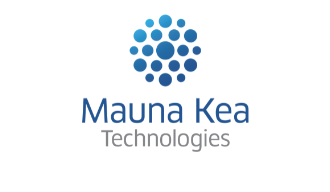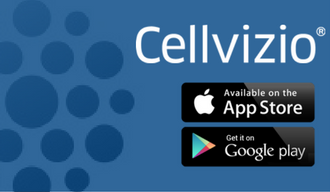Mauna Kea Technologies Announces Completion of Enrollment of the First in Human Clinical Study Combining Robotic-Assisted Bronchoscopy and Needle-Based Confocal Laser Endomicroscopy
The study combining Cellvizio® with the AQ-Flex™ 19 Confocal Miniprobe™ and the Monarch® Platform from Auris Health, Inc., successfully enrolled 25 patients with peripheral lung nodules
Mauna Kea Technologies today announces that, as part of its collaboration with the Lung Cancer Initiative (LCI) at Johnson & Johnson1, Christopher Manley, M.D., Director of Interventional Pulmonology and Assistant Professor of Medicine at Fox Chase Cancer Center (FCCC) in Philadelphia, and Jouke T. Annema, M.D., Ph.D., Professor of Pulmonary Endoscopy, Amsterdam University Medical Center, have completed the enrollment of an observational clinical study combining nCLE and robotic-assisted bronchoscopy, using both Cellvizio and the Monarch® Platform from Auris Health, Inc., part of Johnson & Johnson Medical Devices Companies, for the diagnosis of peripheral lung nodules. This study is co-funded by the LCI and Mauna Kea Technologies (Clinicaltrials.gov: NCT04441749).
The primary objective of this study is to assess feasibility and safety of using the AQ-Flex™ 19 Confocal Miniprobe™ (nCLE) to image in real time, in vivo, and intralesionally in peripheral lung lesions suspected for cancer during robotic-assisted bronchoscopy. The secondary objectives are to assess the capability of nCLE to confirm the position of the transbronchial needle tip in the lung lesion and the added value of nCLE in needle repositioning.
“This study is assessing whether robotic-assisted bronchoscopic nCLE enables real-time, in vivo, cellular imaging within peripheral lung tumors at the needle tip, potentially allowing fine-tuning of the optimal needle positioning,” said Christopher Manley, M.D. “I am truly pleased with the preliminary achievement of this feasibility study as we successfully enrolled 25 patients with peripheral lung lesions, with no adverse events, and obtained good quality nCLE images of lung nodules and/or surrounding tissue in virtually all patients. The final results of this study will be presented at a future medical congress.”
Dr. Manley added: “As reported in a recent publication2, the development of robotic-assisted bronchoscopy has demonstrated excellent navigational success. However, we believe that a two-step approach may reduce the near-miss rate of the target lesion. Robotic-assisted bronchoscopy allows us to navigate out further into the lung to precisely target smaller lesions but the addition of real-time imaging feedback is desirable to confirm the optimal needle positioning within the lesion and contact with tumor cells for targeted biopsy."
“Robotic-assisted bronchoscopy combined with real-time tool-in-lesion confirmation using nCLE imaging has been prospectively evaluated in this study and could potentially reduce the near-miss rate,” said Professor Annema. He added, “We are really looking forward to performing more analysis of the nCLE images obtained on these patients with peripheral lung lesions to validate further the nCLE criteria for malignancy.”
“This important clinical study provides a step further towards the combination of two ground-breaking technology platforms with the potential to confirm with high level certainty that the biopsy needle is sampling within the targeted lesion,” said Robert L. Gershon, Chief Executive Officer of Mauna Kea Technologies. “Thanks to its in vivo cellular imaging capability, Cellvizio combined with the Monarch platform could become a real-time guidance tool to reduce the bronchoscopic near-miss rate of peripheral lung lesions. We are looking forward to sharing the final results of this study.”
1. The legal entity of the Lung Cancer Initiative at Johnson & Johnson is Johnson & Johnson Enterprise Innovation, Inc.
2. Chen AC, Pastis NJ, Jr., Mahajan AK, Khandhar SJ, Simoff MJ, Machuzak MS, et al. Robotic Bronchoscopy for Peripheral Pulmonary Lesions: A Multicenter Pilot and Feasibility Study (BENEFIT). Chest. 2021;159(2):845-52


